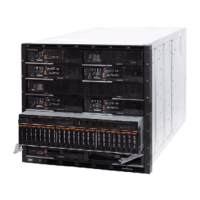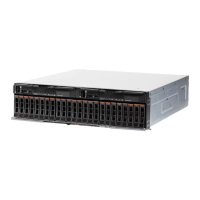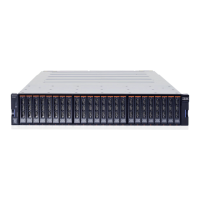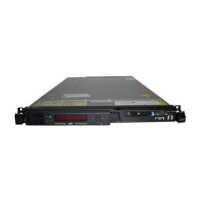Chapter 9. IBM Flex System V7000 Storage Node Copy Services 373
To restore from an FlashCopy backup, complete the following steps:
1. Optionally, create a target volume (6A) for Customer Data_DEBUG for later problem
analysis prior to the Reverse Copy (6B) from previous target volume (Target Data) of the
time wanted (T0 or T0 + n) to the production volume (Customer Data).
2. Create a FlashCopy mapping for the backup to be restored with the target volume being
the source volume and the original source production as the target volume, if this mapping
does not already exist.
3. Start the FlashCopy map (Target Data -> Customer Data) with the -restore option to
copy the backup data onto the production disk.
The production disk is instantly available with the backup data.
Regardless of whether the initial FlashCopy map (Customer Data to Target Data) is
incremental, the Reverse FlashCopy operation only copies the modified data.
Consistency groups are reversed by creating a set of new “reverse” FlashCopy maps and
adding them to a new “reverse” consistency group. Consistency groups cannot contain more
than one FlashCopy map with the same target volume.
9.2.3 Planning for FlashCopy
There are several items that must be considered before performing a FlashCopy, which we
describe in this section.
Guidelines for FlashCopy implementation
Consider the following guidelines for FlashCopy implementation:
The source and target volumes must be on the same IBM Flex System V7000 Storage
Node.
The source and target volumes do not need to be in the same storage pool.
The FlashCopy source and target volumes can be thin-provisioned.
The source and target volumes must be the same size. The size of the source and target
volumes cannot be altered (increased or decreased) while a FlashCopy mapping
is defined.
FlashCopy operations perform in direct proportion to the performance of the source and
target disks. If you have a fast source disk and slow target disk, the performance of the
source disk is reduced because it must wait for the write operation to occur at the target
before it can write to the source.
The -restore option: In the GUI, the -restore option is applied automatically when you
start the FlashCopy mapping from Target Data to Customer Data; when using the CLI,
you need to add the -restore option to the command manually.

